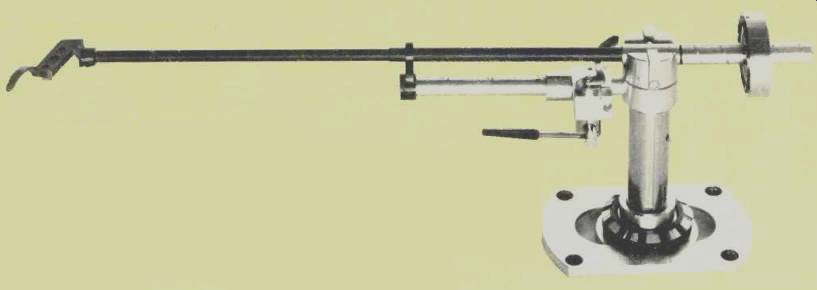
MANUFACTURER'S SPECIFICATIONS:
Overall Length: 11 3/4 in. (30 cm).
Pivot-to-Stylus Distance: 9 1/3 in. (23.7 cm).
Effective Tonearm Mass: 3 grams.
Cartridge Weights Accommodated: 4 to 8.5 grams.
Stylus Force Adjustment: Calibrated in half-gram steps.
Anti-Skating: Calibrated fine-spring adjustment.
Cueing: Oil-damped device.
Bearing Friction: At stylus point, vertical bearing (knife edge), 0.005 gm; Lateral (fine miniature ball bearing), 0.01 gm.
Price: $245.00.
The Infinity "Black Widow" tonearm is a sleek, black and silver beauty intended to vie for top honors with the finest low mass arms now available. It is produced by a company which, since its inception in 1968, has had as its goal, production of "state-of-the-art" audio components. Infinity Systems has established its reputation as a producer of excellent loudspeaker systems. Infinity's first product was the Servo Statik I loudspeaker system. The company was started by Arnold Nudell, who is still its president, along with Cary Chris tie. Infinity is now a subsidiary of Electro Audio Devices.
The "Black Widow" arm has a very low effective mass, which means that it can be used with very light, high compliance cartridges. The main arm tube is made of graphite fiber, a material which is very light and stiff and appears to have good internal damping of structural resonances. The tests were made using an ADC ZLM cartridge, which is ADC's top cartridge. We checked with Infinity and they indicated that the ZLM cartridge was compatible with the "Black Widow" arm and that the combination should provide excellent results. The ADC ZLM Serial No. 7E7021 was used.
The mounting of the arm to the turntable is simple, if your turntable has a cutout or an adaptor for the SME tonearm, since the "Black Widow" uses the same size mounting hole.
If not, it is a little more difficult since the hole must be oblong. A good template and detailed pictorial instructions are provided for cutting the hole and mounting the arm. The sequence of photos and instructions is excellent.
Since the Pioneer PLC-590 turntable we used as a test plat form has an SME arm mounting adaptor, we had the Infinity "Black Widow" mounted in a very short time with no problems. The arm rest is integral with the arm, so no extra hole is needed. The main arm pillar extends below the surface of the turntable 1.5 inches when the arm is set for the minimum height, as would be the case for a very shallow turntable. In this position, the center of the arm is about 1.5 inches above the turntable surface. The arm can be adjusted upwards to accommodate any turntable. The slender graphite fiber arm tube has an integral phono cartridge mount and finger lift.
There is no interchangeable headshell but this convenience is offset by the great reduction in effective mass thus afford ed. Keeping the mass low at both ends of the arm is very important if optimum results are to be achieved. The counterweight design is also excellent in this respect. It is about 1.25 in. (3 cm) in diameter, about 0.344 in. (0.87 cm) thick, and weighs 49.6 grams.
This shape factor and weight means that it can be located close to 'the pivot, when used with a low mass cartridge like the ADC ZLM, which weighs 5.5 grams, and the tracking force is adjusted to as much as 2.0 grams. At a lower tracking force which would normally be used, the counterweight is close to the arm pivot which is very good. It appears that cartridges weighing as little as 3.5 grams could be used. The counterweight can be positioned out as far as 2.5 in. from the pivot, if heavier cartridges must be used, but this would not be as good a mode of operation and should be avoided if possible.
The arm tube is very slender. It is only about 0.156 inches (0.4 cm) in diameter out at the cartridge end. Despite its thin cross-section, it appears very stiff. More importantly, it seems to have a high internal damping. This means that mechanical energy, which is transferred to the arm from the cartridge (this happens with all arm/cartridge combinations to some degree), tends to be absorbed and dissipated by the arm. The ill effects of undamped, mechanical standing wave energy in tonearms has been known for years. Such audio pioneers as Joseph Grado and Paul Weathers used wood as an arm material because they wished to obtain good damping of these structural vibrations. The reduction of coloration due to this internal vibration damping of the arm is very dramatic.
A special template is provided so minimum tracking angle error may be achieved. The template is used to set the correct position of the arm pillar by sliding a locking collar in the oblong cutout. This is a geometrically excellent method of adjusting for minimum tracking angle error. We measured the amount of stylus "overhang" after using the template. It was approximately 1.5 cm which is a "normal" value with respect to other geometric considerations of the "Black Widow" tonearm. Side thrust correction (also called anti-skating or bias) is provided by adjusting a slip-fit ring on a post which extends out from the front of the main pillar. We found that it needed to be set at a little higher value than indicated, but it was calibrated closely enough to be of no concern. The method of setting the side thrust also lent itself to real-time, visual adjustment while reproducing the tracking adjustment bands on B&K 2010 (1 kHz), CBS STR-112 (300 Hz), and HFS-75 (300 Hz). We found that the tracking force and side thrust correction needed to be increased a bit at the inner grooves, which would seem normal enough.
A good cueing lever is integral with the arm. It is damped in the direction of descent and undamped in the lift mode.
A low frequency resonance damping device is included as an integral part of the arm. This consists of a small trough attached to the main pillar and a small post attached to the arm tube. A viscous fluid is placed in the trough and the post on the arm tube must travel through it. The drag of the viscous fluid allows the slow movements required in reproducing a record but offers resistance to "quick" movements of the arm. "Quick" in this case would mean small movements at about 10 to 12 Hz which is the desired arm mass/ cartridge compliance frequency of resonance.
The capacity of the internal wiring is 15 pF which is very low. The external cable supplied measured 85 pF, so the total value of capacity is 100 pF per channel. Our technical measurements were made with a total of about 225 pF. Our previous report on the ADC ZLM mounted in the ADC LMF-2 arm and using the high capacity ADC cable supplied caused a total of 335 pF to be loading the cartridge. It would appear that value of 275 pF recommended by ADC is about right, since it is apparent that the output of cartridge is rising with the 225 pF load.
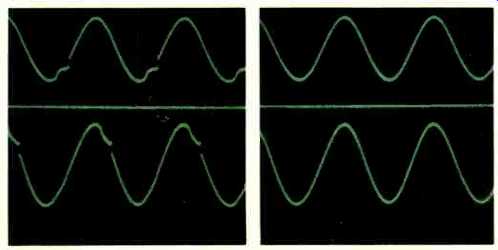
Fig. 1a--Left, Infinity Black Widow tonearm with ADC ZLM cartridge playing
band 9, 300 Hz, on CBS STR-112; level is +18 dB re: 11.2 uM. Tracking force
is 1.25 grams, sidethrust is 1.5 grams. Fig. 1b-Right, as in a, but tracking
force is 1.9 grams and sidethrust 2.5 grams.
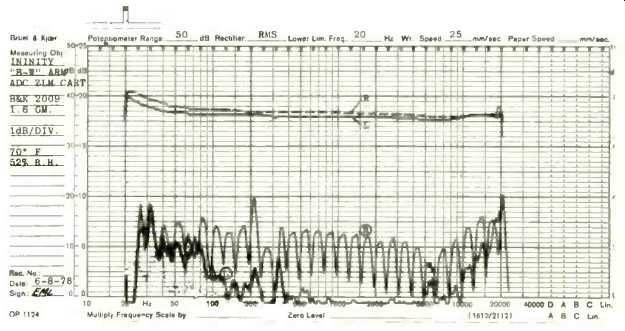
Fig. 2--Interchannel output and crosstalk vs. frequency. Notches in crosstalk
signals are due to filter switching. Increased crosstalk at 200 and 315
Hz are related to small "glitches" in main channel outputs.
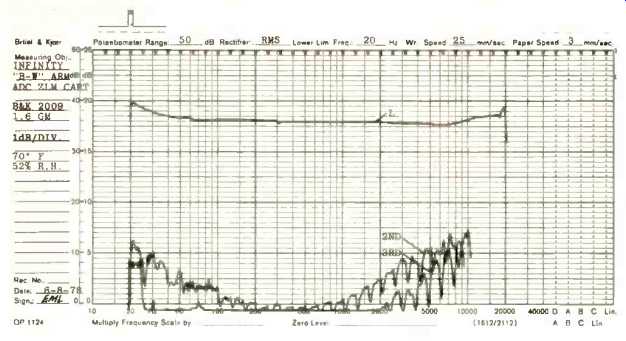
Fig. 3--Second and third harmonic distortion vs. output of left channel.
Part of this distortion is probably due to the B&K 2009 test record.
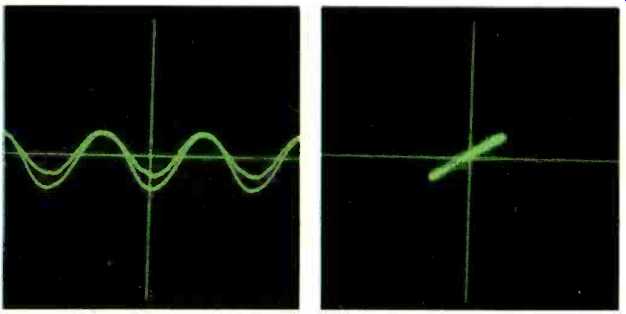
Fig. 4a--Left, amplitude vs. time (Y-T) for 3-kHz signal from B&K 2009.
Fig. 4b-Right, right vs. left channel (X-Y). If both channels were identical,
then the sine waves in 4a would be superimposed and there would be a straight
line at 45° in 4b. The vertical and horizontal lines are cursors in both
4a and 4b and are not intended to represent a zero center, X vs. Y grid;
this is true for all similar waveforms in this report.

Fig. 5a and b--As in Fig. 4 but with a 5-kHz test signal.
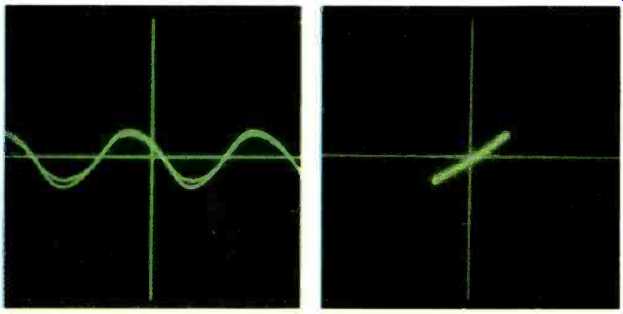
Fig. 6a and b--As in Fig. 4 but with a 10-kHz test signal.
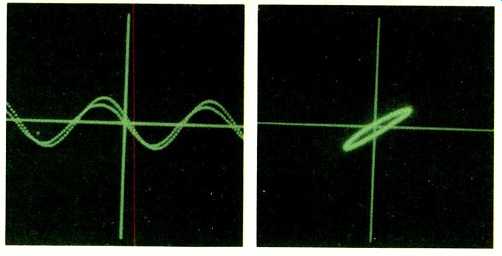
Fig. 7a and b--As in Fig. 4 but with a 20-kHz test signal.
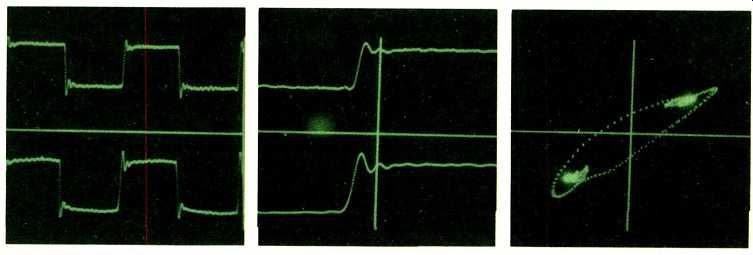
Fig. 8a--Far left, response to 1-kHz square wave signal at 3.54 cm/Sec modulation
on CBS STR-112 record. Fig. 8b--Middle, expansion of leading edge of Fig.
8a. Fig. 8c--Complex signal condition for both channels. With perfect reproduction,
only two bright dots in the first and third quadrants would appear (see text).

Fig. 9--Rise time of the ADC ZLM cartridge in the Infinity Black Widow tonearm.
Figures 1a and 1b show the left (upper) and right (lower) channel outputs when reproducing the 300 Hz tone on CBS test record STR-112. The same format is followed for all other photos in this report. Both photos show the response to the highest level band on the record. This level is extremely difficult to reproduce but, by increasing the tracking force and side thrust correction beyond that recommended, it was possible, as shown in Figure 1b. Since it is not good to exceed the manufacturer's recommended tracking force by a large amount; it was reduced to 1.6 grams for the technical measurements and the listening tests. During the listening session, panel members did comment that they heard occasion al distortion which is normally related to mistracking. It only occurred during very high-level passages in the music and wasn't severe. Since the clarity was excellent during normal passages, perhaps a clue to this phenomenon can be seen in the way the tracking varies with level. The figures for tracking the 1000 Hz test signals of B&K test record 2010 indicate that the tracking force requirement for bands 4 through 7 are low, indicating an exceptional combination of arm and cartridge.
However, in order to track band 3, the force required had to be increased rather dramatically, from 1.0 gram to beyond 2.0 grams. Even at 2.0 grams, visual and audible distortion was present. This would indicate that the distortion due to mis-tracking an occasional peak would be more easily heard with respect to a very clean signal reproducing condition which would predominate. By contrast, a listener who becomes accustomed to a constant level of distortion, albeit low, is less able to hear momentary increases in distortion. As shown in Figure 1b, the 300 Hz signal of CBS STR-112, band 9, was tracked at 1.9 grams but this was also touchy.
The same high quality system used as a reference in the report on the ADC ZLM cartridge and LMF-2 tonearm was used again as means of gathering subjective comments from the listening panel. A certain amount of coloration in the reproduction of vocals was noted by panel members. This effect could be related to Fig. 2. The crosstalk data shows an increase in output from the left channel, at about 315 Hz when reproducing a signal recorded in the right channel only. The right channel shows a similar effect in the crosstalk at about 200 Hz. This effect causes a slight resonance in the vocals to be heard as a coloration. It appears to be caused by a resonance between the arm and the vertical knife bearings.
These bearings are not tight, in order to reduce friction to a minimum. We advise users of the "Black Widow" to make certain that the arm is free and properly centered in the bearing supports. Apparently, when we measured the data shown in Fig. 2, the arm was not centered as well as it could have been, which could partially account for the difference in the amount of crosstalk.
The downward "glitches" in the crosstalk curves are due to the fact that the crosstalk output of the cartridge is being scanned by 1/3-octave wide filter which is switching in steps.
During the switching the output drops momentarily, producing the dip in the crosstalk curves. The use of this filter scanning technique allows the signal-to-noise ratio to be in creased enormously so that details in the crosstalk signal can be seen easily. The dip in response at 18 kHz is an artifact of the B&K 2009 test record.
Despite the slight rise in the measured response at high frequencies, the panel members were consistent in their comments, on all program material, that there seemed to be a lack of overtones or top end as compared to the reference system. The reference system measured as being smoother than the Infinity Black Widow and ADC ZLM combination, so amplitude vs. frequency response, due to steady state signals, does not give a correlation with this perceived effect, and in this case appears to contradict it. It appears that we will have to look elsewhere for an explanation.
The general clarity of reproduction is corroborated by the distortion data shown in Fig. 3, which is very low. The data shown in Figs. 4, 5, and 6 correlate very well with the subjective comments of the listening panel with respect to the stereo imaging, when reproducing relatively simple program material. This was judged to be excellent. Figure 7b shows the interchannel relationship when reproducing a 20-kHz signal. A bit of phase shift can be seen and perhaps this may indicate a bit of correlation with the comments about the lack of top harmonics. While phase shift between the channels does not prove that a subjectively perceivable time delay effect is occurring in the individual channels, it does indicate that some time delay must be occurring.
The stereo imaging for both simple and complex musical passages remained very stable according to the panel, and this is corroborated by the measurement of interchannel relationships shown in Fig. 8c for a 1000-kHz square wave modulation. The ripple shown on the square waves of Figs. 8a and 8b indicate that the resonant frequency of the stylus mass and record material compliance is at 28.6 kHz. Figure 9 shows that the rise time of the ADC ZLM cartridge is again 24 micro seconds as it was in the report on the ADC ZLM and LMF-2 arm combination. This bears out the fact that the resonant frequency and rise time of a cartridge is unaffected by the tonearm in which it is used.
It must be concluded, at this point in our investigation of cartridges and tonearms, that if the tonearm is allowing the cartridge to stay in intimate contact with the grooves and all else is generally the same, the difference perceived in overtone reproduction or in the transients produced by percussive instruments between high quality magnetic and moving-coil cartridges is probably due to the time delay effects caused by the t high inductance of the magnetic cartridge and the associated input load capacity. This effect was verified in another experiment which was conducted with a moving-coil type cartridge in which a time delay was introduced.

Fig. 10--Low frequency resonance due to arm effective mass and cartridge
compliance. Left curves without damping; right curves with damping; little
or no change is noted. Each curve is from 5 to 20 Hz; Q is 2.9 for both modes.
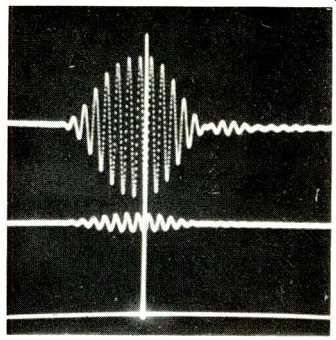
Fig. 11--Filtered tone burst using 10.7 kHz from Shure TTR-103 record; left
is upper trace. Peak modulation level is 30 cm/Sec.
The listening panel made some other comments which touched on the inter relationship between the arm and cartridge. The up per bass register of the acoustic guitar sounded tighter and more well defined, while the lower register of such instruments as the double bass and drums was less tightly controlled, when compared to the reference system. Figure 10 shows the low frequency resonance effect caused by the effective mass of the arm and the compliance of the cartridge. The resonance is at 11 Hz and the Q is 2.9. This frequency is about right according to the latest research. The curves at the left of Fig. 10 show the response without the viscous damping applied while the curves at the right of Fig. 10 are with the damping system operating. The frequency range for each of the curves is 5 Hz to 20 Hz. The tendency of the low bass to excite this 11 Hz resonance and thus produce a modulation effect is most probably the cause for the comments by the panel members regarding the lack of precision in the very low bass. The lack of effect by the damping system appears due to the small size of the damping post (sometimes called a paddle) and the low viscosity of the damping fluid. This is being worked on by the people at Infinity and in fairness we must say that the arm used in our report had a prototype damping system. By the time that you read this report, the damping system should be made effective in reducing the Q of the low frequency resonance. This should cause the reproduction in the low bass register to become excellent.
Figure 11 shows the response of the left and right channels when reproducing the 10.7-kHz filtered tone burst of band 4 on Shure test record TTR-103. This band is recorded at 30 cm/sec which is a very high level. A small amount of delayed signal can be seen in the left channel as well as some distortion in the right channel crosstalk output. At this point in our investigation of various arm/cartridge combinations, the reproduction of this test signal by the Black Widow arm and ADC ZLM cartridge has to be classed as very good.
The Black Widow arm is very easy to set up and use, but we recommend that to achieve the maximum potential, it should be mounted and adjusted by a qualified person who has the proper equipment, although this is not absolutely necessary. We also recommend that, to obtain the full benefits of this excellent arm, a high quality, low mass, high-compliance cartridge be used.
-Edward M. Long
----- Measured Data: Infinity Black Widow tonearm--------
ADC ZLM phono cartridge:
Dynamic Tracking Force, grams required to track B&K 2010 (Gms x 980 = dynes) Band 3, +8 dB
Distorted Band 4, +6 dB 1.0
Band 5, +4 dB 0.8
Band 6, +2 dB 0.6
Band 7, +0 dB 0.5
Tracking vs. Radius, HFS-75, grams
Outer Grooves 0.8
Middle grooves 0.9
Inner grooves 1.0
Microphony: Very low
Low Frequency Resonance: 11 Hz.
Low Frequency Resonance Q: 2.9.
Recommended Tracking Force: 1.6 gms.
Infinity Black Widow tonearm:
Pivot-to-spindle Distance: 8.75 in. (22.2 cm).
Pivot-to-stylus Distance: 9.34 in. (23.7 cm).
Pivot-to-rear of arm Distance: 2.44 in. (6.2 cm).
Spindle-to-rear of arm Distance: 11.125 in. (28.3 cm).
Overall Height Adjustment: 1.5-3.5 in. (3.8-8.9 cm).
Tracking Force Adjustment (Maximum): 4 grams.
Tracking Force Calibration: 8 grams.
Tracking Force Accuracy: 0.55 at 0.5, 1.05 at 1.0, 1.6 at 1.5, and 2.7 at 2.5; good accuracy.
Cartridge Weight Range: 3.5 to 8 grams.
Counterweight: 49.6 grams.
Counterweight Mounting: Slip fit on damped rod with spiral thread.
Sidethrust Correction: Marked for 0 to 2.5 grams with excellent uniformity.
Lifting Device: Finger lift plus lever, damped down, instant up.
Cartridge Offset: 20 degrees.
Overhang Adjustment: 1.5 cm.
Template: Good.
Bearing Alignment: Good in both planes.
Bearing Type: Vertical knife; horizontal, ball race.
Bearing Play: Vertical, large amount; horizontal, very low.
Bearing Friction: Less than 50 mGm in both directions; too low to measure accurately.
Lead Torque: Very little effect.
Arm Lead Capacity: 15pF internal, 85pF external, 100 total.
Arm Lead Resistance: 0.72 ohms internal, 0.18 ohms external, 0.90 total.
Lead Length: 48 in. (122 cm).
Structural Resonances: Extremely dead, dull "clack" when tapped.
Base Mounting: SME type, elongated hole, will mount in SME cutout.
General Comments: Total capacitance at preamp should be about 175 pF.
Make certain that vertical knife bearings are seated properly during use.
--------------
(Source: Audio magazine; Mar. 1979)
Also see:
Heybrook TT2 Turntable and Tonearm (Nov. 1984)
MAS Mk. I Turntable/MAS-282 Tonearm (Dec. 1983)
= = = =